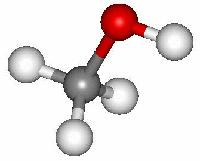|
As of Sep. 2023, the frequency range has been extended to
750 GHz, which covers ALMA up to Band 9 and slightly
beyond. The version number was retained.
This documentation is largely based on the one provided
in
(1) M. N. Drozdovskaya, L. H. Coudert, L. Margulès,
A. Coutens, J. K. Jørgensen, and S. Manigand,
2022, Astron. Astrophys. 659, Art. No. A69.
The extended catalog entry was provided by L. H. Coudert.
The calculation is based on a study that combines rotational
and rovibrational data. It is described in detail in
(2) L. H. Coudert, R. A. Motiyenko, L. Margulès,
and F. Tchana Kwabia,
2021, J. Mol. Spectrosc. 381, Art. No. 111515.
By far the most data are from this work. Additional data were
taken from
(3) M. Liu and C. R. Quade,
1991, J. Mol. Spectrosc. 146, 252;
(4) C. F. Su, M. Liu, C. R. Quade,
1991, J. Mol. Spectrosc. 149, 557;
(5) C. R. Quade, M. Liu, I. Mukhopadhyay, C. F. Su,
1998, J. Mol. Spectrosc. 192, 378;
(6) I. Mukhopadhyay,
2016, Infrared Phys. Technol. 75, 139;
and from
(7) I. Mukhopadhyay, and B. E. Billinghurst,
2021, Infrared Phys. Technol. 113, Art. No. 103563.
The quantum numbers are J, K, asymmetry label,
and symmetry of the torional state. The asymmetry label
describes asymmetric rotor levels with J –
Ka – Kc = 1 and 0,
for the asymmetry labels 1 and 2, respectively.
State numbers 0, 1, and 2 refer to the symmetries
e0, o1, and
e1, respectively.
Please note:
Experimental lines have been merged in the present entry.
The list of
experimental lines with residuals etc. can also be
accessed in the catalog archive.
The rotation-torsional part of the partition function is
nearly converged. Energies up to J = 40 of the first
twelve torsional substates, i.e. up to vt = 3,
were taken into account. Small contributions by small amplitude
vibrations were omitted. This should be sufficiently accurate up to
at least 200 K and still quite good at room temperature.
The dipole moment components were taken from a measurement
of CH3OH by
(8) T. Amano,
1981, J. Mol. Spectrosc. 88, 194;
taking into account the different orientations in the
internal rotation of CHD2OH.
|
